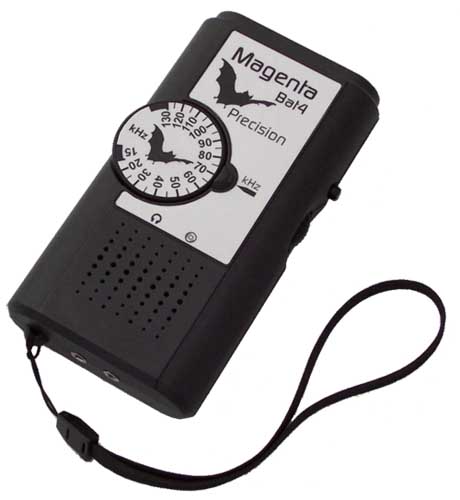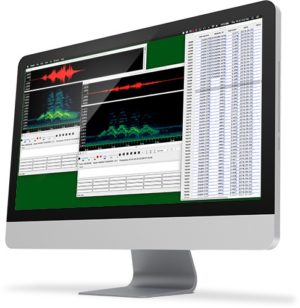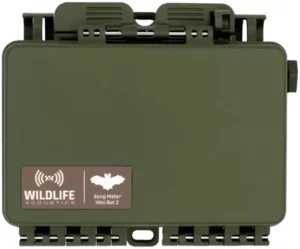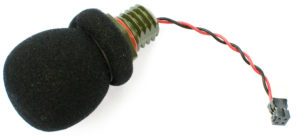Basismekanismen i detektorene er at de omformer flaggermusenes
artskarakteristiske ultralyder som de bruker til ekko-lokalisering, til hørbar
lyd (for oss). Dette gir en lyd der vi kan kjenne igjen de ulike artene.
De enkleste modellene (inkludert denne) har bare denne
lydomformingsfunksjonen kalt heterodyning, som oversetter lyden i
nåtid på en valgt frekvens. Slike detektorer gjør det mulig å gjenkjenne de
fleste artene, og for eksempel finne kolonier. Zoologisk Forening anbefaler
dette for nybegynnere.
En mer avansert form for direkte hørbar oversettelse er frekvensdeling
der alle frekvensene av flaggermusens ultralyd blir oversatt.
De mer kostbare modellene for viderkommende entusiaster og
fagfolk har i tillegg tidsekspansjon. Lyden lagres da først i et
minne. Deretter kan den spilles i et redusert tempo der alle detaljene kommer
fram. Dette gir også bedre muligheter for opptak, arkivering og dokumentasjon.
Mer om
ekkolokalisering og flaggermus på Norsk Zoologisk Forenings sider
Produsentens info:
* Advanced low noise IC preamplifier stage
* high stability ‘easy tuning’ linear heterodyne oscillator
* New audio circuits
* Increased gain and sensitivity
* Convenient bottom mounted headphone socket (mutes Loudspeaker)
* Line level tape recorder socket – constant level regardless of volume control
* Top lit calibrated frequency dial
Using the Magenta Bat4 Bat detector
1 Introduction
2 How it Works!
3 Controls
4 Batteries
5 Checking
6 In the ‘field’
7 Technical Specification
Introduction
Bats use inaudible ultrasonic ‘sounds’ like a sophisticated radar
system to avoid obstacles and locate prey.
The bat4 detector takes the inaudible high frequency ultrasound
and converts it to frequencies between 100Hz and 12kHz which
are in the range of human hearing.
The detector can be tuned to receive a range of frequencies from
15 to 130 kHz. The sounds are heard via a built in waterproof
loudspeaker, and there is a socket to connect standard stereo
‘walkman type’ headphones. A separate constant ‘low level’
output is provided for connection to a tape recorder or PC sound
card.
How it Works
The detector uses the Heterodyne principle. Ultrasound is picked
up, amplified, and mixed in a special way with another signal
generated in the bat detector. The mixer produces the audible
difference frequency between the two. In a typical situation the
bat will be sending ultrasound at 45kHz, the bat detector signal
will be set to 43kHz and the audible output will be the difference
between the two – which is 2kHz.
Controls
There are two rotary controls. A combined volume on/off switch,
and a large calibrated frequency control which adjusts the signal
to be mixed with the ultrasound from the bat.
A low current led illuminates the frequency dial via a ‘light tube.
A small push button switch turns on a bright white LED torch light.
Batteries
Four AAA alkaline or rechargeable batteries are used. The Bat4
works equally well with both types. Alkaline give very long life,
whilst modern rechargeable cells – especially NiMH are an environmentally
friendly alternative.
Note: Make sure the detector is switched OFF when changing
the batteries.
Checking
There are many common sources of ultrasound – jangling keys,
rustling newspapers, rubbing two fingers together, and dropping
paper clips onto a hard surface all produce interesting and different
responses. Computer fans also produce steady ultrasonic
whistles.
Any of these sources can be used to check that the detector is
working. Start with the volume half way, and set the frequency
control to 40kHz.
The ‘heterodyne’ principle is demonstrated very well if continuous
source such as a computer fan is available. As the frequency
control is rotated, the pitch of the detector output will change and
fall to zero when the frequency of the fan noise and the local
signal are equal. Rotating the Frequency control in either direction
will result in the pitch rising, as the difference between the two
signals increases.
In the Field
When looking for bats, set the frequency to 45kHz. Many different
bats echolocate at around this frequency. When looking for
a particular species set the control to the appropriate frequency
and ‘scan’ the area by pointing the detector in different directions.
Ultrasound is very ‘directional’ and the microphone is much more
sensitive to ‘head on’ signals than to signals from either side. It
is often possible to locate a bat by pointing the detector to the
strongest ultrasound long before it can be seen.
Once bats are detected, the frequency control can be ‘fine tuned
to get the best signal. If there are two relatively close frequency
settings that give similar signals, always chose the lower one*.
The detector only receives ultrasound, it does not transmit anything
that will disturb the bats. The only output is the audible
signal from the loudspeaker – which (presumably) is of no interest
to the bats even if they could hear it.
*Heterodyne detectors produce the difference between the bat
frequency and the local signal. If the bat frequency is below the
local signal frequency, a fall in the bat frequency will result in a
rise in the pitch of the audible signal – because the difference will
be greater. This is an inversion of the ‘frequency spectrum’.
If the Bat frequency is above the local signal, a fall in the bat
frequency will reduce the difference and so produce a fall in the
audible signal – so the ‘frequency spectrum’ is the right way round.
Technical Specification
Type: Heterodyne
Frequency Range: 15 – 130kHz
Bandwidth: +/- 9kHz
Output power: 0.5 watts
Headphone socket: 3.5mm Stereo
Tape Socket: 3.5mm stereo jack
Tape Output: 100mV typical
LED torch White 5mm led.
Batteries: 4 x AAA
Speaker: Waterproof low profile mylar
Microphone: Wide band electret.




